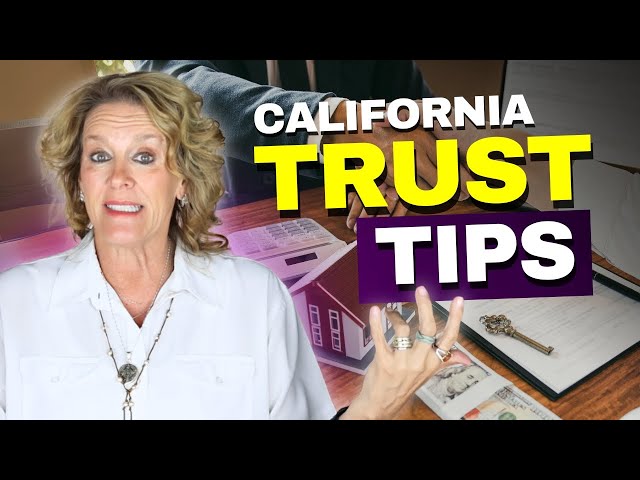Estate planning is one of those subjects that many professionals, entrepreneurs, and even seasoned investors delay addressing until it’s too late. Yet, if you own property in California, the decisions you make today will determine whether your legacy is passed on smoothly or becomes entangled in years of costly legal battles.
A recent conversation with estate planning experts highlighted the critical steps and common pitfalls of transferring property into a living trust in California. For professionals seeking to safeguard their wealth, avoid probate, and ensure their families’ protection, understanding this topic is crucial.
Why California Makes Estate Planning Especially Critical
California is renowned for its beauty, but also for its complexity in terms of laws and regulations. The same principle applies to estate planning. Unlike other states, the probate process here is especially challenging, time-consuming, expensive, and often destructive to families.
Before you decide whether a trust is right for you, it’s essential to understand not just the technical steps but the implications for your heirs, your legacy, and even your business operations.
The Essential Steps to Transfer Property into a Living Trust
You must transfer property into a living trust properly to guarantee it works as intended. Even small mistakes can unravel the benefits and land your estate back in probate. According to the experts in the discussion, there are three non-negotiables:
- Execute the Trust Properly
- The trust must be signed, notarized, and witnessed. Without this, the trust isn’t legally valid.
- Prepare and Record the Deed
- California counties typically use a grant deed, a warranty deed, or a quitclaim deed.
- The deed must be recorded with the county where the property is located. This is what officially places ownership under the trust.
- Document the Transfer
- Once recorded, the deed becomes part of your trust portfolio, serving as evidence that the trust owns the property and not the individual.
Miss a step here, and your property may not be protected as you intended.
Why Avoiding Probate Matters So Much
Probate is the court-supervised process of distributing an estate. While it sounds orderly, the reality is closer to a nightmare:
Public Exposure: Probate is public, meaning anyone who thinks they have a claim to your estate can step forward.
Frozen Assets: Bank accounts and other assets are often frozen until the probate process is resolved.
Time Delays: In California, probate typically lasts 2–4 years, although in some cases, it can drag on for decades.
Family Conflict: Children, siblings, and other beneficiaries often fight over allocations, turning estates into battlegrounds.
Financial Erosion: Legal fees and administrative costs can diminish an estate’s value by up to 50–55% before distribution.
In other words, without a living trust, your estate may shrink dramatically in value and take years to reach your heirs.
The Will vs. Living Trust Debate
Many assume that having a will is enough. The reality is starkly different:
- A will still goes through probate. It only takes effect after death, and your heirs still face delays, costs, and potential disputes.
- A living trust bypasses probate. It allows assets to be transferred seamlessly and privately.
Think of it this way: a will is a set of instructions for the court, while a trust is a private legal entity that manages your assets during and after your lifetime.
Common Mistakes When Transferring Property into a Trust
The experts highlighted a recurring theme: people often think they’ve handled estate planning, only to discover critical errors. The most common mistakes include:
- Failure to notarize and witness the trust – making it legally ineffective.
- Not recording the deed – leaving ownership in the individual’s name rather than the trust.
- Overlooking multiple properties – forgetting to transfer each one into the trust individually.
Each of these errors can send property straight back into probate, undermining all the planning you intended.
Estate Planning as Generational Wealth Strategy
Estate planning isn’t just about avoiding headaches; it’s about intentionally building a legacy. The experts referred to this as “Rockefeller-style planning”:
- Control assets without directly owning them.
- Ensure continuity across multiple generations.
- Build frameworks that outlast market fluctuations, family disputes, and tax challenges.
For professionals and business owners, this is about more than personal property. It’s about protecting operating companies, investments, and long-term family wealth.
Practical Next Steps for Professionals
If you own property in California or expect to in the future, here are actionable steps:
- Audit your current estate plan. Do you have a will or a trust? Is it properly executed and updated?
- Confirm deeds are recorded. Verify that each property you own is transferred into the trust.
- Educate your heirs. Family disputes often arise not from the documents but from a lack of communication.
- Seek expert guidance. Estate planning isn’t a DIY project. Partner with professionals who are knowledgeable about California law.
Final Thoughts
As professionals, we spend years building wealth through businesses, investments, and careers. But without careful planning, much of that effort can be lost to probate, legal disputes, and unnecessary costs.
A living trust isn’t just a legal formality; it’s a tool to protect your life’s work, provide for your loved ones, and ensure your legacy extends beyond your lifetime.




